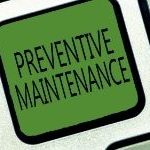Every business wants to operate efficiently—minimizing waste, maximizing productivity, and ensuring customer satisfaction. Yet one of the biggest threats to profitability hides in plain sight: faulty or defective goods.
When products don’t meet quality standards, the damage extends beyond wasted materials. Faulty goods can erode brand reputation, increase return rates, and even expose your business to legal and safety liabilities. According to the U.S. Small Business Administration, poor quality control and product recalls are among the top causes of small business failure.
Addressing this issue isn’t just about reducing losses—it’s about protecting your customers, your employees, and your company’s long-term growth.
In this article, we’ll explore the main causes of faulty goods—equipment issues, contamination, and human error—and outline practical strategies to prevent them before they impact your bottom line.

1. Equipment Faults: The Hidden Cost of Neglected Maintenance
Your manufacturing equipment is the backbone of your production process. Even minor mechanical faults can distort dimensions, alter product properties, or render entire batches unusable. In some cases, equipment issues can also lead to workplace accidents and downtime, compounding the cost of production loss.
Why Equipment Fails
- Wear and tear: Components naturally degrade over time. Bearings, belts, and motors can malfunction if not replaced regularly.
- Poor calibration: Machines that aren’t properly calibrated can produce inconsistent results, especially in precision manufacturing.
- Inadequate cleaning: Dirt, grease, or residue buildup affects machine performance and product quality.
Preventive Steps You Can Take
The key to eliminating equipment-related defects is preventive maintenance—regularly scheduled inspections and part replacements before failure occurs.
Here’s how to implement it effectively:
- Develop a maintenance calendar. Log inspection dates, part replacements, and calibrations.
- Train staff for daily checks. Operators should perform quick visual and performance checks before each shift.
- Use predictive technologies. Modern sensors can detect vibration, heat, or alignment changes before a breakdown happens.
According to the U.S. Department of Energy, companies that implement preventive maintenance programs experience up to 30% reduction in equipment downtime. Regular maintenance doesn’t just prevent product defects—it extends equipment lifespan and improves your return on investment.
2. Contamination: Protecting Materials and Product Integrity
Contamination can occur at multiple stages of production—from raw material handling to packaging and storage. For industries like food processing, pharmaceuticals, and electronics, even minimal contamination can lead to severe financial and reputational damage.
Common Sources of Contamination
- Improper handling: Materials stored or transported in open or unsanitary environments.
- Airborne particles: Dust, microbes, or chemical vapors infiltrating sensitive materials.
- Cross-contamination: Tools, gloves, or packaging that carry residue from other production batches.
How to Prevent It
To maintain product integrity, businesses must control their production environment with strict hygiene and containment protocols.
- Invest in cleanroom technology. Controlled environments like cleanrooms regulate air purity, humidity, and temperature to protect sensitive goods.
- Implement Good Manufacturing Practices (GMP). These guidelines, endorsed by the U.S. Food and Drug Administration (FDA), ensure safe and consistent manufacturing standards.
- Review material suppliers. Vet all vendors for compliance with quality and sanitation standards.
- Upgrade packaging systems. Use sealed, tamper-resistant packaging to prevent exposure to contaminants.
By prioritizing contamination control, you not only reduce waste but also demonstrate your commitment to safety and compliance—key factors in maintaining customer trust.
3. Human Error: The Most Common (and Costly) Factor
Even with advanced automation, human error remains a major contributor to defective goods. From misreading instructions to skipping steps in a process, small mistakes can lead to significant production flaws.
Why Human Error Happens
- Lack of training or supervision
- Fatigue and burnout
- Low engagement or unclear communication
Automation can help, but people remain central to every production process. Instead of viewing human error as unavoidable, businesses should take steps to minimize it through training, communication, and motivation.
Strategies to Reduce Human Error
- Improve onboarding and training. Provide hands-on, ongoing training to ensure employees understand every production step.
- Use visual aids and digital tools. Clear signage, color-coded labels, and real-time production dashboards help workers avoid mistakes.
- Promote a safety and quality culture. Reward consistent, accurate performance rather than just speed.
- Encourage feedback loops. Let workers report equipment issues or process flaws before they escalate.
Research from the Occupational Safety and Health Administration (OSHA) shows that engaged, well-trained employees are 70% less likely to make costly mistakes compared to disengaged teams.
4. Strengthening Quality Control Systems
Even with well-maintained equipment and trained staff, errors can slip through. That’s where a robust quality control (QC) system comes in. QC isn’t just about catching defects—it’s about preventing them from recurring.
Core Quality Control Practices
- Incoming material inspection: Verify that raw materials meet specifications before entering production.
- In-process checks: Inspect products at multiple stages, not just at the end.
- Statistical process control (SPC): Use data analytics to identify trends or variations in production.
- Final product testing: Conduct random sampling and quality audits to ensure every batch meets standards.
Integrating QC with digital tools—such as barcode scanners, AI inspection cameras, and real-time monitoring software—can dramatically improve accuracy and speed.
5. Creating a Culture of Continuous Improvement
Preventing faulty goods isn’t a one-time project—it’s an ongoing process. Businesses that succeed in reducing defects usually foster a culture of continuous improvement.
Encourage teams to regularly assess workflows, share feedback, and propose efficiency upgrades. Hold quarterly reviews to analyze performance metrics such as defect rates, rework hours, and production downtime.
Using frameworks like Lean Manufacturing or Six Sigma can also help eliminate inefficiencies systematically. These methodologies focus on reducing waste, improving quality, and boosting customer satisfaction—all critical for long-term success.
Frequently Asked Questions (FAQs)
What should I do if I discover a batch of faulty goods?
Immediately isolate the defective batch, investigate the root cause, and document the findings. Notify clients if necessary, and adjust your processes to prevent recurrence. Transparency is essential for maintaining trust.
How often should I conduct equipment inspections?
Most manufacturers perform weekly visual checks and quarterly full inspections. The schedule depends on equipment complexity, usage frequency, and manufacturer guidelines.
Is automation the best way to prevent faulty goods?
Automation can reduce risk, but it’s not a cure-all. The most effective systems combine automation with human oversight, training, and consistent maintenance.
Final Thoughts
Faulty goods don’t just cost money—they cost reputation, time, and customer confidence. Whether caused by machine failure, contamination, or human error, every defect is an opportunity to strengthen your systems and improve efficiency.
By combining preventive maintenance, contamination control, team training, and quality assurance, you can dramatically reduce the risks of faulty products and elevate your brand’s reliability.
When you prioritize quality at every stage—from design to delivery—you build a foundation of trust and sustainability that drives long-term business growth.











